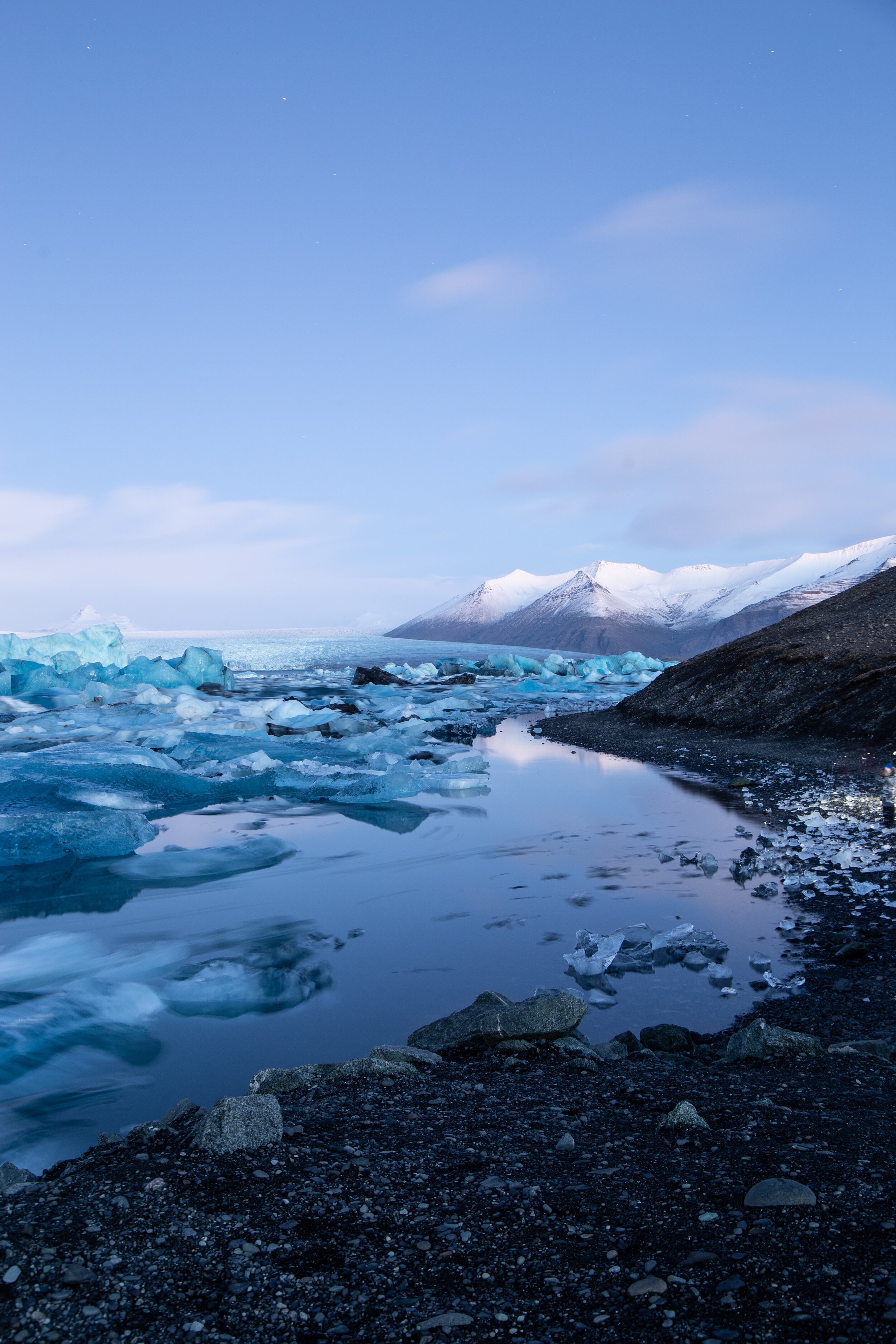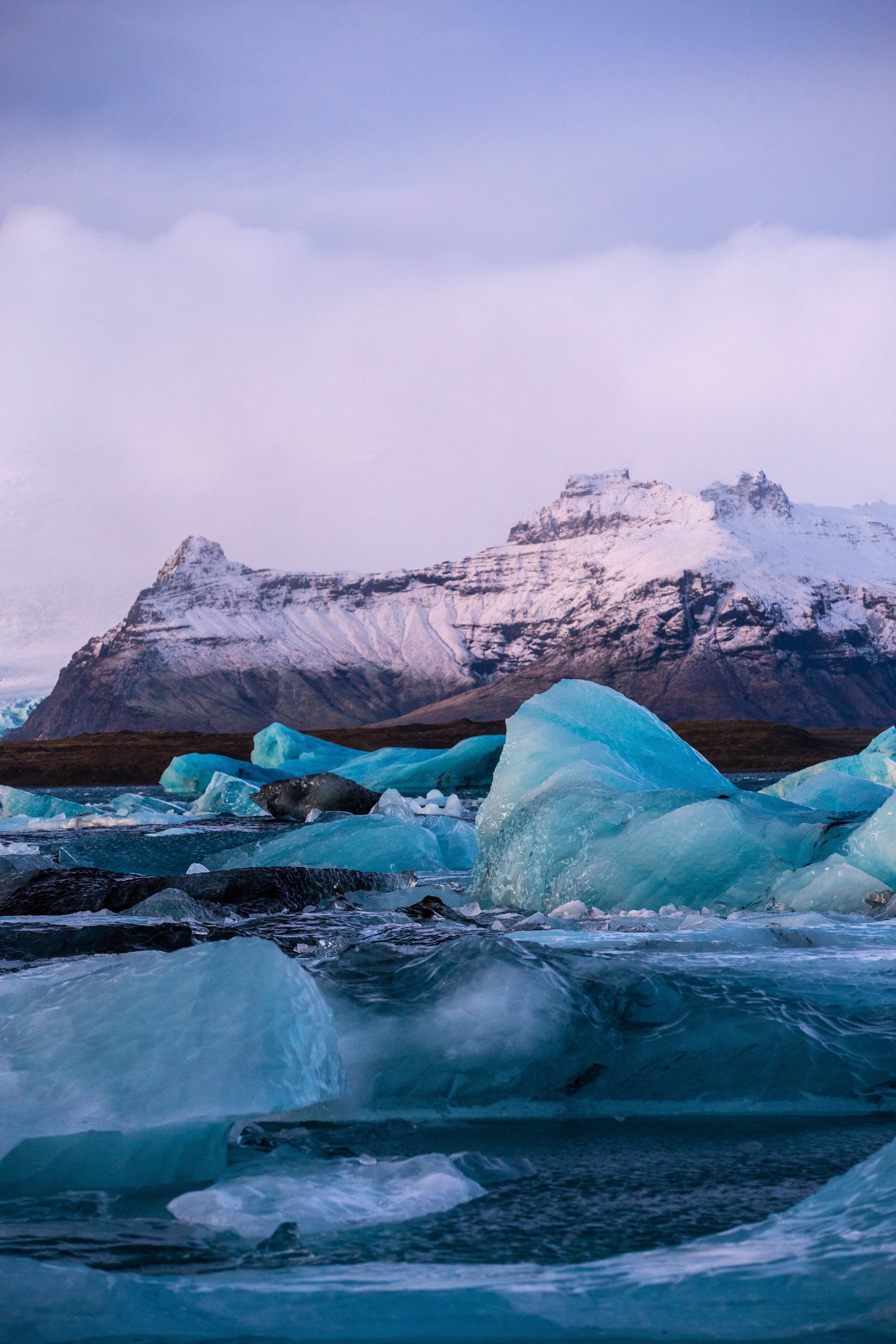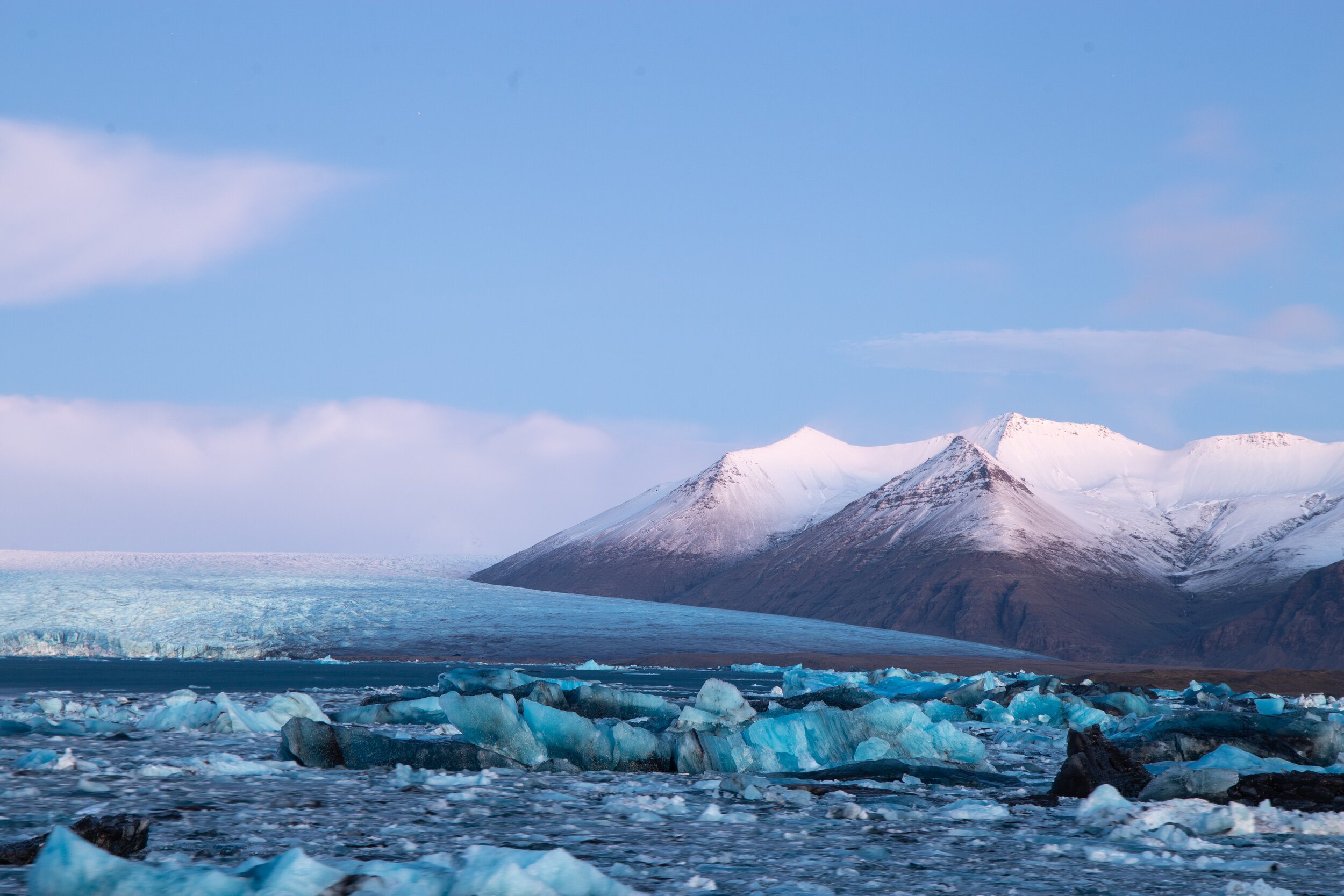Jokulsarlon Glacier Lagoon
Always Changing
Jökulsárlón is a glacier lagoon found in south-east Iceland, at the edge of Iceland’s largest glacier, Vatnajökull. The name Jökulsárlón literally translates into Glacial River Lagoon.
To me, Jökulsárlón is one of the most fascinating places out there. The landscape is surreal and always changing, never the same. This stunning glacier lagoon is a visually striking manifestation of nature reacting to climate change right before your eyes.
Like all other attractions that are both incredibly beautiful and easily accessible, Jökulsárlón has become one of the most popular sights in Iceland.
Formation
The landscape at Jökulsárlón is under continuous change. You can actually see it changing by the minute. Come back tomorrow, next month, next year, and it will look different!
As one of the outlet glaciers of Vatnajökull, called Breiðamerkurjökull, started retreating in the 1930s, a glacier lagoon formed in its path (Jökulsárlón). Over time, thousand-year-old icebergs detach from the glacier body and make their way across the lagoon and into the Atlantic Ocean to meet their final destiny. The strong ocean waves break the ice into smaller pieces, crashing them against the shore. And there they rest, washed up on the black sand beach (Diamond Beach), slowly melting away.
Before the 20th century, this body of water didn't exist. The lagoon grew four times in size during the last five decades, and continues to expand as the Breiðamerkurjökull glacier melts due to global warming. A nice way to visualise this is by looking up Jökulsárlón using the Google Earth Timelapse tool - this clearly shows just how much the lagoon has changed from 1984 to present time.
In recent years, Jökulsárlón has been gaining around 0.5km² surface area every year. Despite being a relatively new natural formation, the lagoon has grown to a depth of up to 248m, which makes it Iceland’s deepest lake. One day, it will also be one of the largest.
Diamond Beach
All of the ice in the lagoon that survives the journey into the ocean eventually ends up on the nearby shores of Breiðamerkursandur, the glacial outwash plain in that area. For obvious reasons, this section around the mouth of the lagoon has earned the name Diamond Beach.
Getting There
Jökulsárlón is very easily accessible, as it’s just on the main road, but it does require a long drive from Reykjavik. Without any stops, it’s roughly a 5h journey from the capital, but this depends on weather conditions particularly during the winter season, and can turn out to be longer.
Parking at Jökulsárlón is free of charge and there are several parking areas around the bridge, providing easy access to both the lagoon and the beach. Free toilets are available by the larger parking area, which is also the assembly point for all tours.
When to Visit
Both summer and winter are a great time to visit. Travelling to Jökulsárlón during summer or winter makes for two very different experiences. It is vastly different, from your journey there, to the amount of daylight, and the things that you can do around the lagoon.
Of course, visiting during winter carries more risk in the form of travel interruptions. If the weather is really bad (which happens more often than not), getting there, if even possible, will take longer than expected, and sections of the road can close at short notice. But, it can be done!
As Jökulsárlón is some distance away from the capital and airport, it would be safest to plan this for the start of your trip, especially if you are self-driving. During summer, this isn’t an issue at all.
Timing is also crucial if you are venturing that far during the winter. If driving all the way from Reykjavik, you would need to either drive in the dark or use up your 5-6 hours of daylight just to get to your destination. With so many distractions on the way there, from black sand beaches to dazzling waterfalls and more, it’s best to allow for an overnight stop along the way.
In terms of things to do, sadly you can’t have everything in either season. While glacier hikes are an all year round activity, other experiences are much more seasonal. You can only venture into the blue ice caves during winter, and you can only go on a boat tour during summer. Having tried out both, I really could not pick one tour over the other - both are amazing experiences! It’s worth mentioning though that there is a significant chance that tours can end up cancelled during winter, if the weather is bad - this happened to us, twice. So there is that risk.
In terms of scenery, a winter visit is the winner for me. The mountains nearby are all be covered in snow, which really brings out the best of that landscape. The light coming from the south is much softer - it almost feels like a long transition from sunrise to sunset, with nothing in between - this is really great for photography. There are bound to be fewer crowds during the winter. And, in the harsher climate of winter, it could be that ice is more abundant in the lagoon - but I’m not so sure about that one. All in all, despite the added uncertainty and potential challenges of a winter drive, the reward might be worth it.
Tours
Even just admiring the lagoon and glacier from the shore is an incredible experience in itself. But there is a wide range of other things that you could do around the area, and they are really all worth considering.
Regardless of what you do at the lagoon, you could either self-drive to lagoon or join a group tour from Reykjavik. Car rental costs vary widely depending on season, car type, and insurance plan. For tours, day-trips from Reykjavik start at roughly £100 per person, with a couple stops along the way, but multiple day tours with more stops and activities are available, and are probably the better option. Unless you can’t drive or are a solo traveller (due to cost), I will always recommend self-driving in Iceland instead of joining organised tours, no matter the season. It’s one of those places where having your own car and the flexibility that comes with that can be very rewarding. My advice would be to rent a car and then book those tours that you really cannot do on your own - there is no shortage of them around the lagoon.
During summer only, you can go on a boat tour across the lagoon, on an Amphibian (boat with wheels) or a Zodiac (inflatable boat). An amphibian carries more passengers and is cheaper, but a zodiac boat is smaller and faster, and can bring you closer to the icebergs - personally I would go for the latter. There is also the option to go kayaking.
While at Jökulsárlón, keep an eye out for seals. The glacier lagoon is one of the best places for seal spotting in the whole of Iceland. They do sometimes come near the mouth of the lagoon to catch fish. You have a much higher chance of seeing them up and close by going on a Zodiac boat tour.
During winter only, you can explore the ice caves around the area, famous for their stunning crystal-clear blue colour. You can actually see ice of various shades of blue dotted across the lagoon, but the ice cave blue is a different flavour altogether. As the glacier is melting away, these formations are slightly different year-on-year, so you never really know what you get.
Glacier hiking tours are available all year round, however the glacier does look better and less muddy during the winter season.
Be careful who you book with when advance payments are involved. During the pandemic, free cancellation in Iceland hasn’t always been as advertised. Always check recent reviews, and have a look at T&Cs (save a copy).
Northern Lights
During winter, Jökulsárlón could be a great place to see the Northern Lights, so it might be good to spend the night in the area. Far away from any settlement, with an iconic view facing north and the reflection that comes with it, it just seems like the perfect place for this. But don’t plan for it, or you are setting yourself up for a potential disappointment. The odds of there being significant aurora activity on clear sky are low, even during the long dark nights of winter.
Our Experience
We visited the glacier lagoon three times (in late December, early February, and mid August).
On our first visit, the ice cave tour we had booked got cancelled due to adverse weather. But there was so much ice on the lagoon I couldn’t believe it - massive blocks of ice, of all shapes and colours. The sea was rough, and the sky was on fire, so the views across the road at Diamond Beach were equally impressive. To compensate for all this greatness, the wind was so strong that, just as we were about to leave, the section of the ring road where Jökulsárlón is closed for a few hours, in both directions. Fortunately though, we remained stuck in one of the most beautiful places in Iceland. This was the afternoon of December 31st 2018, and so we ended up celebrating the New Year driving somewhere between Vik and Reykjavik (our final destination), and actually got to see the Northern Lights at midnight.
On our second visit, there was barely any ice floating across the lagoon - an underwhelming and very different sight compared to my previous experience. The ice cave tour we had booked got cancelled on this occasion too, due to heavy rain which flooded the caves. However, we managed to book a last minute tour with another company that would take us to a different ice cave, which, despite also being partially flooded, was still possible to visit, and really beautiful.
On our third visit, and our first during summer, Jökulsárlón was more of a stop along the way than a destination in itself, as we were venturing further east. However, we decided to take this opportunity to try out something new that we were not able to do on our previous visits, and so we went on a Zodiac tour, which was great fun. We got to see the icebergs up close like never before and we also came across lots of seals. More on that in another post.
















Probably the most beautiful waterfall in Iceland